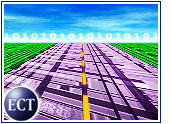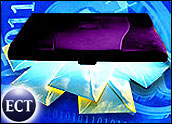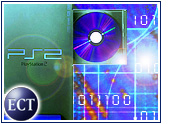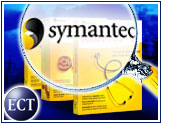
The tale is familiar: Enterprises are generating massive amounts of data — e-mail, Word documents, video, audio and databases — and IT managers are scrambling to identify and purchase the most cost-effective, easy-to-manage storage solutions available.
There are many choices, ranging from traditional direct-attached storage (DAS), which still commands an impressive market lead, to more complex and expensive network-attached storage (NAS) and storage area network (SAN) products. But can vendors deliver what companies want and need in 2003?
Their task is not easy. Faced with still-tight IT budgets, companies are trying to trim expenses, even as vendors try to pump up revenue. The value of the data storage market, which stood at US$24.5 billion in 2001, fell to $19.9 billion in 2002, and IDC predicts it will drop even more over the next five years. Last month, the research firm noted, factory revenues for storage were down 3 percent to $4.7 billion compared with the second quarter.
Lower Cost = Higher Demand
However, that decline may be due not to a slackening of demand, but to a shift toward low-end, lower-cost SAN and NAS solutions that can help enterprises better utilize existing storage capacity, rather than purchasing expensive new hardware for high-end solutions. In fact, Gerald Longoria, product manager of Dell’s storage systems division, told the E-Commerce Times that demand for storage solutions will actually increase in 2003.
“I think the real key driver has been lowered cost,” Longoria said. “We’re seeing about 35 to 45 percent cost declines in the disk space, which translates into lowered system costs. [Storage solutions are] really more accessible than they ever have been before.”
SAN/NAS Convergence
In addition to a focus on lower-cost solutions, analysts expect to see continued convergence of SAN and NAS technologies in 2003, driven by the decreasing costs of required components and by enterprises’ desire to boost efficiency of data management.
The most common way to meld these two storage management systems is to combine a NAS “head” — the intelligent component of the NAS, minus the disks — with a SAN’s disks, IDC storage analyst Brad Nisbet told the E-Commerce Times. In such a setup, the NAS head controls the files, Nisbet explained, while data resides on the SAN disks. The NAS head is attached via the fibre channel switch on the SAN.
While EMC has long offered a converged solution called Solera for its Symmetrix line, other companies have followed suit only recently. For example, Network Appliance announced last month that it will provide Hitachi SAN systems with its NetApp enterprise NAS gateway technology. IBM offers its Total Storage Gateway 300 model, while Dell released its PowerVault 770N and 775N NAS servers to connect to Dell/EMC SAN storage systems. For its part, Hewlett-Packard has its NAS 8000 for enterprise and mid-range convergence.
Nisbet said he also anticipates a shift toward more SAN/NAS convergence in the mid-range market, led by Dell and HP. Previously, he noted, such convergence was occurring mainly on the high end.
Up, Up and ATA
Because some companies are not prepared to invest significant resources in networked storage, Nisbet also expects to see increased demand for ATA storage units — solutions based on the same type of disks as those found in garden-variety PCs. Once considered unreliable underachievers compared with their SCSI counterparts, ATA-based offerings have improved dramatically, led by Network Appliance’s (*correction) NearStore and EMC’s Centera.
Although Nisbet does not believe ATAs are ready for use as primary storage systems, he said they are strong contenders as secondary units. “The reliability curve is improving greatly for ATA technology to the point where, because they are so much cheaper, we will see vendors start to introduce ATA technologies in some of the more enterprise-like products,” he noted.
For example, Network Appliance’s ATA business already has grown noticeably, even in the enterprise space, according to the company’s director of product marketing, Chris Bennett. Since releasing its NearStore ATA system last year, Network Appliance has installed more than 300 systems, representing 3 petabytes of storage space (*correction).
“ATA drives offer very large capacity at a very low cost. And the reliability, though not on the same level as enterprise fibre channel drives, is a lot better than tape,” Bennett told the E-Commerce Times, adding that reliability will likely improve as these drives become faster. “Today, we’re using 5,100 rpm (revolutions per minute) drives, but that’s going away, and 7,200 is becoming the standard, with 10,000 rpm on the horizon.”
Top End Rising
In fact, today’s data storage market is much like the desktop PC market. As enterprise customers focus on low-end networked solutions and secondary storage systems, the top-end storage hardware arrays are getting bigger and better, and will continue to do so as 2003 wears on.
“The technology for increasing the amount of storage on a particular platter, on a disk, is increasing at a very rapid rate,” Aberdeen’s Hill said. “It’s like what’s happening on your PC. And that trend is not likely to stop.”
For example, IBM’s Shark family of enterprise-level storage servers got a memory boost last fall when the company enhanced its Shark Model 800, increasing its capacity to 55.9 terabytes, up from 28 terabytes. EMC is expected to follow suit early this year with a memory boost that will double capacity of its Symmetrix 8000 line of storage systems. Its Symmetrix 8830 is already expandable up to 70 terabytes. And Hitachi recently announced its 9900V has been expanded to hold a capacity of 148 terabytes, nearly double its previous capability.
So, what lies ahead? Something bigger, better and faster, no doubt — but will companies be willing to pay for it? Only time will tell.
*Editor’s Correction Note: In the original version of this article, we incorrectly referred to Network Appliance, maker of the NearStore storage solution, as “Network Associates.” Also, the article incorrectly said, “Since releasing its NearStore ATA system last year, Network Appliance has installed more than 300 systems, representing 3 terabytes of storage space.” In fact, the 300 systems represent 3 petabytes of storage space.














































Social Media
See all Social Media